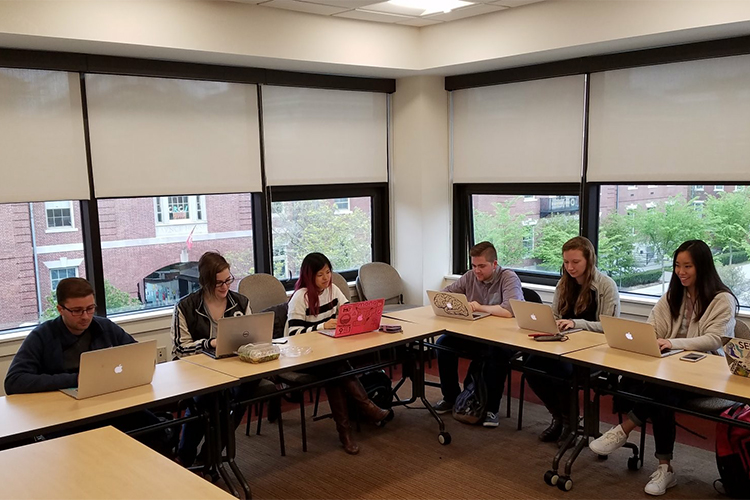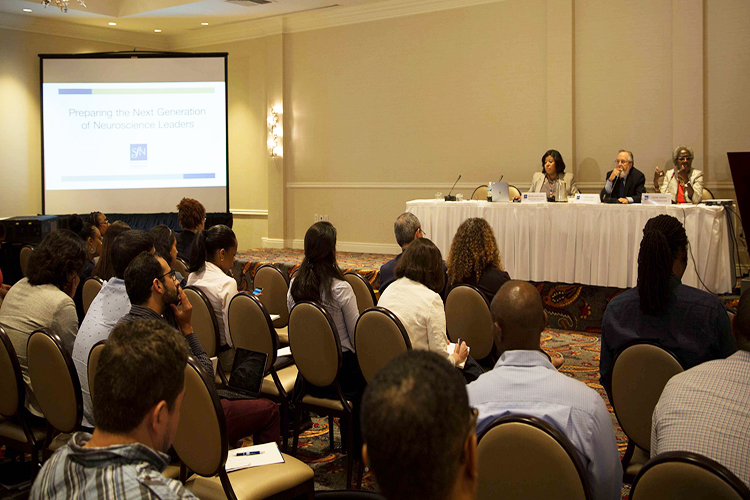
SfN Journals: A Better Publishing Experience
When it comes to publishing their work, neuroscientists have a seemingly endless array of options: traditional subscription journals, online-only "mega-journals," full and hybrid open-access publications, to name a few. Given all these venues, how does one choose the best place for their research?
Resources such as Think. Check. Submit. and Project Cupcake can help scientists identify reputable and high-quality journals. Once identified, however, the submission, review, and publication processes can be time-consuming and frustrating, as biologists Robert Montgomerie and Tim Birkhead recently wrote in The Scientist.
The Society for Neuroscience’s two scientific journals, The Journal of Neuroscience (JNeurosci) and eNeuro, provide neuroscientists with two high-quality venues for publishing their research while striving to make the entire experience — from first submission to final publication — as straightforward, fair, and constructive as possible. As the world’s largest organization of neuroscientists, SfN’s publishing practices are informed by members who understand the needs of today’s scientists and the field at large. “For lots of us, society journals are where things should be,” said Jeff Blaustein, a behavioral neuroendocrinologist and reviewing editor for eNeuro.
10 reasons you should consider one of SfN’s journals for your next paper:
- Scientific excellence: Publishing with one of the Society’s journals means having the world’s largest organization of scientists studying the brain and nervous system behind you. SfN’s Scientific Publications Committee holds the journals to the highest standards of publishing excellent and rigorous science.
- Fair evaluation: As a nonprofit publisher with an editorial board of neuroscientists, the Society’s journals focus exclusively on publishing rigorous research that advances the field of neuroscience, rather than their bottom line. JNeurosci author Marc Spehr said he was “impressed with the professional, transparent, and fair handling of our manuscript. The whole process was fast, reviews were helpful, and editors were always happy to clarify issues and provide a balanced perspective.”
- Rapid publication: By publishing articles online ahead of print, JNeurosci has cut down the time from acceptance to publication from about 60 days to just two weeks. “This serves the neuroscience community by even more rapidly disseminating peer-reviewed research” wrote Editor-in-Chief Marina Picciotto in her monthly editorial. eNeuro provides an initial editorial decision within four weeks and then publishes accepted papers within a matter of days. “The goal [of eNeuro] is to publish sound science,” said Tom McHugh, a team leader for the Circuit and Behavioral Physiology laboratory at the Riken Brain Science Institute. “Because of that, the evaluations are more straightforward and I think in some sense more fair. People can publish their work in a very reasonable amount of time.”
- Evolve with the field: JNeurosci and eNeuro are journals for neuroscientists, by neuroscientists. Both journals are committed to serving the field by experimenting with and implementing publishing practices that meet scientists’ changing needs, including the ability to host extended datasets and new guidelines for statistical reporting in JNeurosci to support future replication. eNeuro takes a constructive approach to peer review by synthesizing reviewer comments and providing authors with the guidance they need to get their work published.
- Hassle-free publishing: “Publishing in J. Neuroscience was a pleasure,” said Daniel Barth, professor of neuroscience at the University of Colorado at Boulder. “Fast, thorough review and publication.” If your paper is not the right fit for JNeurosci, the journal offers a seamless transfer submission to eNeuro. “I [was] excited to transfer my lab’s manuscript to eNeuro because of the journal’s relationship with SfN, the strong reputation of its editorial board, and the quality of the manuscripts that it has published,” said developmental neuroscientist Craig D.C. Bailey at the University of Guelph’s Ontario Veterinary College. Both journals also accept direct submissions from Authorea, a web-based writing and collaboration platform, and the preprint server bioRxiv.
- Exposure: The Society highlights select papers from both journals to international media prior to publication. This increases the likelihood of journalists covering your work. JNeurosci and eNeuro papers have been covered in outlets such as Inverse, International Business Times, New Scientist and Nature.
- Open access: Every paper in eNeuro is freely available upon publication under a Creative Commons Attribution 4.0 International license. JNeurosci authors have the option of paying an additional fee to publish their paper with immediate open access, which complies with many funding agencies’ requirements. All JNeurosci papers become freely available six months after publication.
- Double-blind peer review: When eNeuro manuscripts are sent out for review, neither the authors nor the reviewers are aware of the others’ identity. This means that your paper is evaluated on purely scientific terms, not implicit biases based on who you are or where you come from. “I’m not sure that as a young investigator I would have been given the same consideration as a more senior investigator,” said eNeuro author William Stacey, an assistant professor of neurology and biomedical engineering at the University of Michigan. “I could say things [in this paper] because I was anonymous that I would have been afraid to under different circumstances.”
- Non-traditional results: With eNeuro, the Society provides a home for excellent science that might not quite fit into other neuroscience journals. “eNeuro is happy to publish null results, which is something that we don’t see often,” noted reviewing editor Daniela Schiller of the Mount Sinai School of Medicine. The double-blind process “lets people who maybe have contradictory data or negative data get their work out there because negative results save a lot of time and money and help other people out,” added reviewing editor Karen Szumlinski a professor at the University of California, Santa Barbara.
- Investment in the field: Your submission and publication fees support the Society’s various professional development programs and outreach and advocacy efforts that advance the global neuroscience community.
The Society’s journals are committed to advancing the field by publishing excellent research across the neurosciences and improving the author experience. Follow @SfNJournals on Twitter, like SfN on Facebook, and sign up for JNeurosci and eNeuro alerts to keep up with the latest research.



















